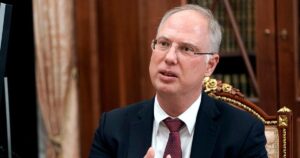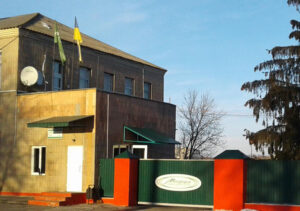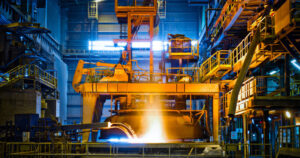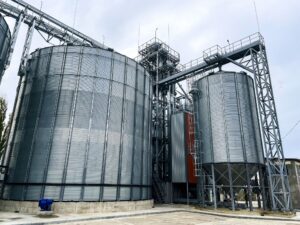
Ukrainian President Volodymyr Zelensky signed two decrees on the implementation of decisions by the National Security and Defense Council of Ukraine regarding the application of personal special economic and other restrictive measures, his press service reported.
“Russia is trying to drag out the war, expanding its attempts to justify its aggression and ‘normalize’ the occupation of Ukrainian territories. Russia has also recently made a demonstrative political decision to impose ‘sanctions’ against Ukrainian officials, in particular against the Prime Minister of Ukraine. Such behaviour by Russia deserves much greater pressure from the world and an expansion of the scope of this pressure,” the president said.
The first decree introduces sanctions against eight individuals who are participants in crimes against Ukraine and Ukrainians, have appropriated property in the agricultural sector, grain crops, cultural heritage sites, conduct information operations against our state, and implement Russian educational standards with anti-Ukrainian narratives in the temporarily occupied territories of Ukraine.
From now on, Russian officials, an FSB agent involved in information sabotage, a representative of the Russian General Staff’s information management department, as well as Kirill Dmitriev, a financier close to the Russian president who is involved in attracting Russian investments to key sectors of foreign economies, and individuals who justify the Russian Federation’s armed aggression are subject to sanctions.
The head of state stressed that Ukraine will submit our proposals for new sanctions to the relevant partners.
The second decree introduces sanctions against five legal entities – Russian publishing houses that work to justify aggression, spread Russian propaganda around the world, and instill anti-Ukrainian sentiments in the temporarily occupied territories of Donetsk, Luhansk, Zaporizhzhia, and Kherson regions.
“We will work to ensure that these publishers cannot participate in international book fairs and that their products are removed from online sales platforms around the world,” said Vladislav Vlasyuk, the president’s adviser on sanctions policy.
decree, RUSSIAN FEDERATION, SANCTION, ZELENSKY, Кирилл Дмитриев

In January-September 2025, pharmaceutical manufacturer Monfarm (Cherkasy region) increased its net profit by 9.6 times compared to the same period in 2024, to UAH 25.176 million.
According to the company’s disclosure to the National Securities and Stock Market Commission, its net sales revenue for this period increased by 34.7% to UAH 233.655 million.
Monfarm PJSC was established in 1994 through the corporatization and privatization of the Monastyryshchensky Pharmaceutical Plant, a state-owned enterprise organized in 1986 on the basis of an alcohol plant as part of the Kyiv pharmaceutical association Darnitsa.
Monfarm specializes in the production of suppositories and tableted medicines, with more than 70 names of medicines from various pharmaceutical groups.
The quality of the products is confirmed by GMP certificates.

According to the results for January-September of this year, PJSC Ukrainian Graphite (Ukrgraphite, Zaporizhia) increased its net losses by 56.7% compared to the same period last year, to UAH 185.076 million.
According to the company’s interim report, net income for this period decreased by 9.8% to UAH 973.915 million.
The company’s undistributed profit at the end of September amounted to UAH 3 billion 480.625 million.
As reported, Ukrgrafit ended 2024 with a net loss of UAH 202.447 million, while in 2023 it increased its net profit by 2.34 times compared to 2022, to UAH 122.920 million.
Ukrgrafit is a leading Ukrainian manufacturer of graphite electrodes for electric steel melting, ore-thermal, and other types of electric furnaces, commercial carbon masses for Soderberg electrodes, and carbon-based refractory materials for metallurgical, machine-building, chemical, and other industrial complexes.
According to the National Depository of Ukraine (NDU) for the first quarter of 2025, Intergraphite Holdings Company Limited (Malta) owns 23.9841% of the private joint-stock company, and C6 Safe Group Limited (Cyprus) owns 72.0394%.
The authorized capital of the private joint-stock company is UAH 233.959 million, and the nominal value of a share is UAH 3.35.

The Kryvyi Rih Mining and Metallurgical Plant PJSC ArcelorMittal Kryvyi Rih (AMKR, Dnipropetrovsk region) reduced its net loss by 6.8% in January-September of this year compared to the same period last year, from UAH 6.186 billion to UAH 5.768 billion.
According to AMKR’s interim report, net income for the first nine months of 2025 increased by 4.5% to UAH 52 billion 278.473 million from UAH 50 billion 16.499 million.
The uncovered loss at the end of September reached UAH 29 billion 711.796 million.
According to the AMKR’s annual report, in 2024, the plant reduced its consolidated net loss by 25.5% compared to 2023, to UAH 8 billion 841.812 million from UAH 11 billion 875.984 million. At the same time, net income decreased by 54.3% to UAH 64.599 billion from UAH 41.873 billion. Retained earnings at the end of the year amounted to UAH 24.039 billion.
As reported, AMKR ended 2022 with a net loss of UAH 49.9104 billion, while in 2021 it received a net profit of UAH 25.282951 billion.
ArcelorMittal Kryvyi Rih is the largest producer of rolled steel in Ukraine. It specializes in the production of long products, in particular, rebar and wire rod.
ArcelorMittal owns Ukraine’s largest mining and metallurgical complex, ArcelorMittal Kryvyi Rih, and a number of small companies, including ArcelorMittal Beryslav.

From November 3 to 8, 2025, the crypto market experienced a sharp decline and subsequent partial stabilization. Bitcoin fell to the $99–101 thousand range on November 4 and closed the week near $106–107 thousand, remaining below recent highs.
Drivers of the week. The market started with a decline on November 3–4 amid cautious signals from the Fed and increased appetite for profit-taking after a weak October. According to media estimates, the beginning of November brought a continued decline in major coins, with Bitcoin falling about 18% from its recent record high.
Bitcoin ETFs in the US recorded net outflows on certain days of the week. On November 3, 4, and 6-7, there were negative cumulative flows, which put pressure on the price.
Ethereum was volatile following the market. On November 3–4, ETH fell by almost 9% per day, then partially recovered and traded at around $3,400–3,450 on November 8.
Funds and events. Publications noted that uncertainty about interest rates and geopolitics had dampened risk appetite. At the same time, interest in crypto-based products remained strong in the sector, including discussions of new exchange-traded funds, which supports medium-term expectations.
The week’s results for key indicators are as follows:
1) BTC range on November 3–8: maximum around $111 thousand on November 3, minimum around $99 thousand on November 4.
2) ETF flows: net outflows on certain days, including November 4 and November 6–7.
3) ETH range: $3,060–3,650, closing the week at around $3,440 on November 8.
The basis for forecasts and their scenarios is neutral-volatile. Support for BTC is visible in the range of $98–101 thousand, and maintaining it preserves the chances for consolidation and attempts to grow to $110–114 thousand. Risks are associated with continued outflows from ETFs and a general rotation in risk assets. An increase in inflows into funds and the absence of negative news regarding regulators could return the price to the upper limit of the range. If $98,000 is broken downwards, the risk of acceleration to $92–95,000 increases, with a subsequent search for a new balance. Estimates are based on price dynamics and ETF flows on November 3–8.

KMZ Industries (Karlovsky Machine-Building Plant, KMZ, Poltava region) has implemented one of the largest grain storage projects in southern Moldova—the ORIZONTUL-LUX grain elevator, the company’s press service reported on Facebook. According to the report, the facility has four flat-bottom silos with a total capacity of 10,000 tons, four hoppers (one for truck loading) with a total capacity of 1,100 tons, a Brice-Baker grain dryer with a dust suppression system, and a complete automation system.
The company specified that the dryer runs on gas, which is the most optimal option for local conditions. It provides effective drying of corn, wheat, and sunflowers.
The silos and main structures were installed by specialists from the owner company, whose main activity is construction. The work was carried out under the technical supervision of KMZ Industries’ chief installers. The installation of the automation system, software configuration, and commissioning were carried out by specialists from the automation and electrification department of KMZ Industries.
The new ORIZONTUL-LUX elevator has become one of the largest grain projects in southern Moldova.
KMZ Industries is the largest manufacturer of elevator equipment in Ukraine and produces a full range of products, including silos, grain dryers, transport equipment, and separators, as well as providing automation and installation services.
According to the company, it has built more than 5,000 facilities. KMZ Industries silos with a total volume of more than 12.5 million cubic meters are in operation.